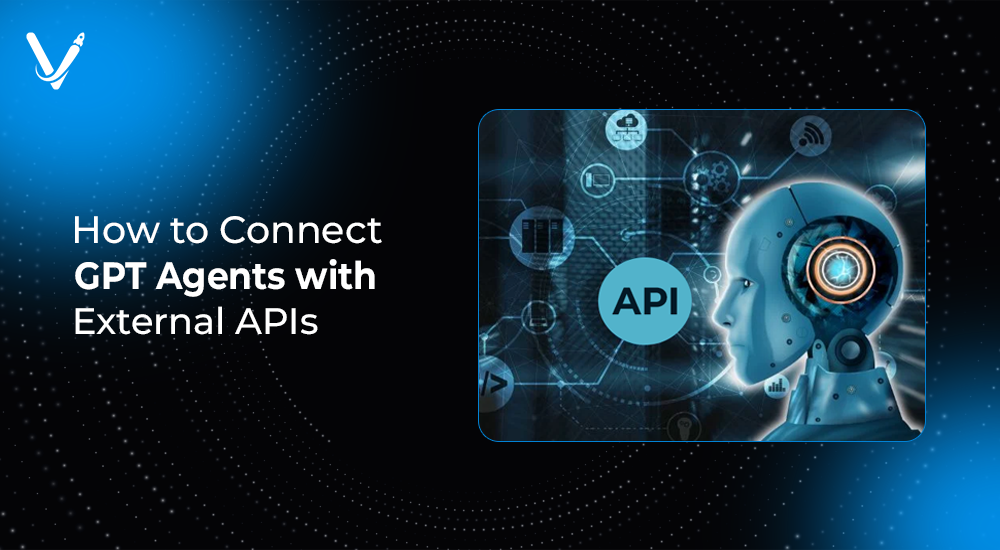How to Connect GPT Agents with External APIs


- May 27, 2025
ChatGPT agents are redefining how users interact with software. These intelligent agents can carry out tasks, understand context, and generate responses that feel conversational and human-like. But what truly unleashes their potential is their ability to connect with external APIs, enabling them to take actions in real-world applications.
In this article, you’ll learn how to connect ChatGPT agents with external APIs to create seamless, functional, and intelligent systems. We'll explore what ChatGPT agents are, how to use a custom GPT, key use cases, implementation strategies, and best practices. Whether you're looking to automate workflows, access third-party data, or integrate AI into your product, this guide will walk you through it.
ChatGPT agents are AI entities designed to perform tasks or assist with specific objectives. They can remember context within conversations, access tools, and even browse the web if configured to do so. By default, they operate within the confines of their training data. However, when extended with external API integrations, their capabilities grow exponentially.
When developers explore GPTs further by linking them with real-time services, the agents can, for example, book appointments, retrieve financial data, control IoT devices, or send alerts.
Learning how to use a custom GPT is central to maximizing your AI application. A custom GPT allows you to define behavior, upload specific knowledge files, and, more importantly, connect with tools and plugins—like APIs.
These features empower developers and businesses to tailor GPT agents for domain-specific needs—such as customer support, healthcare diagnostics, marketing automation, or ecommerce recommendations.
A hospital builds a custom GPT agent to schedule appointments, check doctor availability, and access electronic medical records using secure APIs.
A fintech app connects its ChatGPT agent to APIs that retrieve real-time stock prices, portfolio data, and bank transaction history to provide financial insights.
An online store integrates its product database and order tracking systems via APIs. The GPT agent helps customers browse inventory, check shipping status, and process returns.
A GPT agent connects with APIs from smart home platforms (e.g., Philips Hue, Nest) to control lights, thermostats, and security systems based on user input.
These examples demonstrate how custom ChatGPT agents with API connectivity move beyond chat—they become full-fledged action agents.
To understand how custom ChatGPT creating new chat for every chat can interact with APIs, it's important to break down the interaction flow:
This back-and-forth enables rich, dynamic responses based on live external information.
Here’s how developers can set up and link their custom GPT with external APIs:
Example:
{
"name": "getWeather",
"description": "Fetches weather data from external API",
"parameters": {
"type": "object",
"properties": {
"city": { "type": "string", "description": "City name" }
},
"required": ["city"]
}
}
To successfully link GPT agents with external systems, consider these technologies:
To build a secure, scalable, and reliable integration:
Secure Your APIs
Rate Limit and Retry
Fail Gracefully
Log and Monitor
Document Everything
A travel tech startup builds a GPT agent that:
Users enter their destination and travel dates, and the GPT agent responds with flight times, prices, hotel ratings, and even creates a travel itinerary.
This end-to-end experience feels magical but is powered by carefully integrated APIs behind the scenes.
Latency Issues Solution: Use caching and prefetching where possible.
API Token Expiry Solution: Implement auto-refresh mechanisms and alerts.
Non-Deterministic GPT Calls Solution: Add stricter instructions to improve consistency and reliability.
Data Privacy Solution: Avoid exposing sensitive user data in API requests or logs.
As OpenAI expands plugin capabilities, the future holds:
When developers learn how to use a custom GPT to its fullest, possibilities are endless—from enterprise automation to personal productivity.
Connecting ChatGPT agents to external APIs transforms them into proactive, intelligent assistants. Whether it’s enabling a chatbot to check stock inventory, making a medical assistant smarter, or helping travelers book flights—this integration drives business innovation.
At Vasundhara Infotech, we specialize in building advanced AI agents tailored to your use case. From designing secure API backends to deploying custom GPTs that align with your brand, our team is ready to help.
Let’s build the future together. Reach out today to get started.
Copyright © 2025 Vasundhara Infotech. All Rights Reserved.
